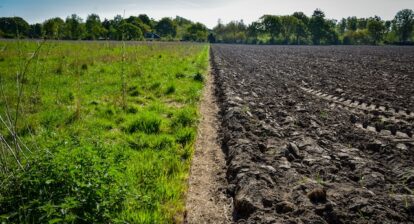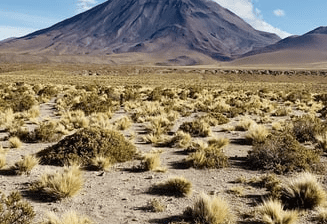Video on climate change news in 2019
I hope you enjoy the show. You can subscribe to the You Tube Channel for more on science, history and nature and please do check out the website and follow on social media: Twitter // Instagram // Facebook // Reddit // Tiktok. Please subscribe to the audio podcast on: Apple Podcasts // Stitcher // TuneIn // Spotify
Blogpost/Transcript
This VLOG is on the most pressing issue of our time: Climate change. With the constant barrage of news on climate change many of us have reached climate fatigue. However, that does not take away the fact that we are facing one of humanity’s worst crises and like it or not we have to deal with it. This year has seen one big scientific report after another describing the state of our climate and how it will affect not only our future generations — but also us. As world leaders gather in Madrid for the United Nation’s 25th Conference on climate change, let’s review the new data, the warnings and the calls to action.
It was at the Conference in 2015 that nations pledged to do something about climate change, when they signed the Paris Agreement. They agreed to two goals: to limit warming to 2 degrees Celsius, and to try to achieve a lower target of 1.5 degrees Celsius from pre-industrial times. The thing is, temperatures have already increased by 1 degree Celsius since pre-industrial times, so we do not really have a lot of space to manoeuvre. There is only about half a degree left to reach the maximum. And the prognosis this year has not been good. The host of scientific documents released have all highlighted one main thing: we are at a very crucial pointand we need to take action NOW.
Let’s start with the report issued in October by the UN’s Intergovernmental Panel on Climate Change (IPCC), which is a scientific body set up to monitor global climate impacts. It told us that there is no definitive way to limit temperature rise to 1.5 degrees Celsius above pre-industrial times by 2030–2050. Even the 2 degrees Celsius goal seems unlikely because the pledges countries made at the Paris Agreement are just not enough to avoid even 3.6 degrees of warming. To limit warming to the lower goal would require unprecedented changes on how we approach energy systems, land use, city and industrial design, transportation and building use. Annual Carbon dioxide emission levels are still rising. They would have to drop to half by 2030 and zero by 2050. Emissions from methane, which have been rising steadily, also need to be curtailed. At the current rate of greenhouse gas emissions, the atmosphere will likely warm to 3 degrees Celsius above pre-industrial levels by 2040.
(We have only till 2020 to keep warming below 1.5 Celsius)
The report projected that climate-related risks to health, livelihoods, food security, water supply, human security and economic growth would increase with the warming.
The IPCC report followed a study published in June that warned of rising methane levels due to activities such as livestock farming, coal, oil and gas mining and distribution, as well as burning of fossil fuels. When emissions are discussed, we usually tend to concentrate on carbon dioxide emissions but methane is also a very potent greenhouse gas and is 21 times more powerful than carbon dioxide. A molecule of methane is capable of causing 28 to 36 times more heat than a molecule of carbon dioxide over a 100-year period. Recent studies have shown that methane levels have risen from about 1,775 parts per billion in 2006 to 1,850 parts per billion in 2017, presenting an additional challenge to achieving Paris Agreement goals.
(Increasing methane emissions are undermining the achievement of the Paris Agreement goals)
While some made fun of Greta Thunberg and the students’ climate strikes, more dire news kept reaching us.
Earlier in November, on the 40th anniversary of the First Climate Summit in 1979, 11,000 scientists warned of a climate emergency and untold future suffering. They assessed the change in human activities since 1979 to the present and showed how they had influenced emissions, temperatures, ice loss, sea level change, ocean temperatures and extreme weather. While there were some positive signs, such as decreases in fertility, increases in consumption of renewable energy, institutional fossil fuel divestment, and some advances in carbon pricing, these were undermined by increasing emissions due to Amazon deforestation, general loss of tree cover, increased livestock farming, a rising population and air transport among others. Basically, everything about the global economic system has led to increasing emissions.
(Is Climate Change Leading Us to Category 6 Hurricanes?)
In terms of climate change, November was a depressing month. The United Nation’s Environment Program released its Emissions Gap Report, warning that greenhouse gas emissions were rising so quickly that drastic reductions will have to be made to meet levels set by the Paris Agreement. This means that nations must cut emissions by 7.6 percent annually from 2020 to 2030 to meet the 1.5 degrees Celsius goal and 2.7 percent per year for the 2 degrees Celsius goal. Even if all the current unconditional commitments made under the agreement are fully implemented, temperatures are still on track to rise by 3.2 degrees. This level would trigger wide-ranging and destructive climate impacts. (Check out my VLOG on Turning Carbon Dioxide into Rocks)
According to the report, greenhouse gas emissions have risen 1.5 percent per year over the last decade. Emissions in 2018, including from fossil fuel use, as well as from land-use changes hit a new high of 55.3 giga-tonnes of carbon dioxide equivalent. Meanwhile it has been quite clear that to limit temperatures to 2 degrees Celsius, annual emissions in 2030 need to be 15 giga-tonnes of carbon dioxide equivalent lower than current unconditional commitments for the 2 degrees Celsius goal. For the 1.5 degrees Celsius goal they need to be 32 giga-tonnes lower. Instead, just the day before the Emissions Gap Report was released, the U.N.’s World Meteorological Organization in its Greenhouse Gas Bulletin U.N.’s World Meteorological Organization in its Greenhouse Gas Bulletin corroborated that greenhouse gases in the Earth’s atmosphere are rising and reached record levels in 2018.
We have achieved concentrations of carbon dioxide at 407.8 parts per million in 2018, increasing from 405.5 parts per million in 2017. This is 147 percent above pre-industrial levels in 1750. There has been an overall 43 percent rise in what is called radiative forcing i.e the warming effect on climate by greenhouse gases. Carbon dioxide accounts for about 80 percent of this but methane and nitrous oxide contribute as well. Atmospheric methane reached a new high of about 1860 parts per billion in 2018 and is now 259 percent of the pre-industrial level. Atmospheric concentrations of nitrous oxide were 331.1 parts per billion in 2018 — making it 123 percent higher from pre-industrial levels.
Despite all the talk of committing to climate action, G20 nations have still not done enough. They collectively account for 78 percent of all emissions, however only five of its members have committed to a long-term zero emissions target. Developed countries will have to reduce their emissions quicker than developing countries, for reasons of fairness and equity. However, all countries will need to contribute more to collective efforts.
In the last few days of November, there was another stark warning: that the world may have already reached tipping points, which scientists called an “existential threat to civilization” and urged that “we are in a state of planetary emergency”. These tipping points include the Greenland ice sheet melting at an unprecedented scale; the fast shrinking Arctic sea ice; accelerating ice loss in Antarctica; corals well on their way to being completely decimated; increasing intensity of droughts, fires and pests in the Amazon, boreal and temperate forests; the thawing of the permafrost; and a slowdown of the Atlantic circulation that also could be due to warming oceans.
Rising temperatures are going to lead to all of these tipping points being reached sooner and resulting in a cascading effect. The last five years have been the hottest ever recorded. Just in the first few days of December, we already have news of a typhoon in the Philippines (its 20th this year), continuous and unabated fires in Australia and new dire warning of melting Greenland ice, which is likely to cause extensive sea level rise. This is in just the last two days. Over the year, we have seen higher frequency and intensity of hurricanes and typhoons, such as Cyclone Idai that devastated Mozambique, unprecedented fires in the Amazon, Indonesia, Malaysia, in addition to the recent ones in Australia and more and more droughts especially in arid African regions.
The current level of efforts are clearly not enough. We are not going to solve this problem with half-hearted solutions. The whole economic system needs a complete overhaul. As the 25th Conference of Parties continues in Madrid, cooperative global action to combat climate change has become imperative. According to UN Secretary General Antonio Guterres, there is a distinct lack of political will, evident from the fact that there are still subsidies on fossil fuels, no specific and agreed price on carbon, and no taxation on pollution. The Conference is hoping to push for extremely ambitious national commitments from all countries and to make 100 billion dollars funding available to developing countries for mitigation and adaptation. Mr. Guterres’ exact words at the start of the meeting were “We are in a deep hole and we are still digging. Soon it will be too deep to escape.”
But we do have a clear road-map from scientists and from the Paris Agreement: to limit warming to 1.5 degrees Celsius above pre-industrial levels; to cut emissions by 45 percent from 2010 levels by 2030 and to reach carbon neutrality by 2050. Now we need to set out ambitious work-plans to achieve this. Those kids out on the streets are right. We have failed them drastically. We need to listen to them, get out of our comfort zones and take extreme action. Not just as individuals, but as nations and jointly as inhabitants of this planet. It is crucial to our own survival.
(Read: How We Healed the Ozone Layer)






